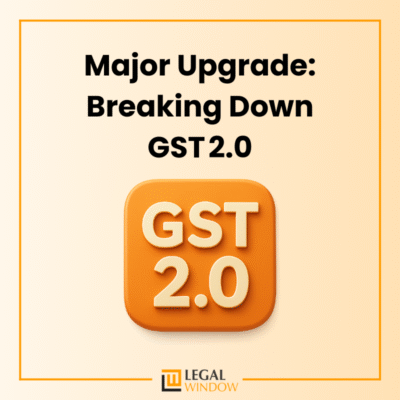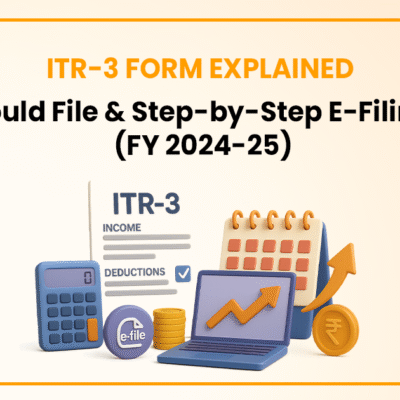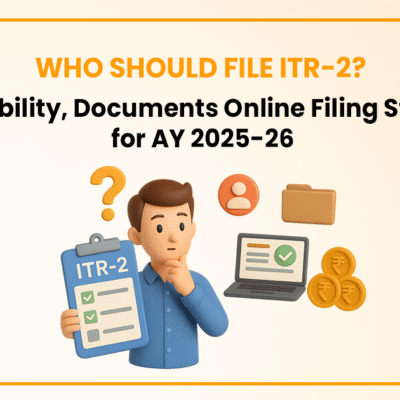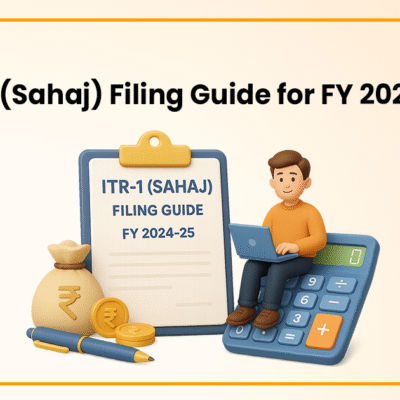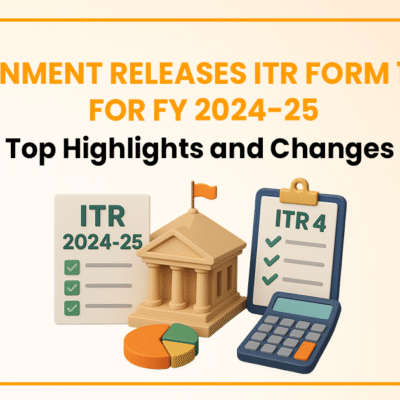 Any business whose aggregate turnover exceeds INR 40 lakh (excluding Northern East area and Hill state which requires INR 10 lakh as year’s turnover) is mandate to be registered under GST by the concerned taxable person. Such taxable person becomes a mandate taxpayer registered under GST. The payments on collected GST filing are to be made by the taxpayer through online portal. After making the payments the appointed GST officer will meticulously examine all the particulars filed by the taxpayer and if there’s any ambiguity the taxpayer will be held accountable for such exonerate.
Any business whose aggregate turnover exceeds INR 40 lakh (excluding Northern East area and Hill state which requires INR 10 lakh as year’s turnover) is mandate to be registered under GST by the concerned taxable person. Such taxable person becomes a mandate taxpayer registered under GST. The payments on collected GST filing are to be made by the taxpayer through online portal. After making the payments the appointed GST officer will meticulously examine all the particulars filed by the taxpayer and if there’s any ambiguity the taxpayer will be held accountable for such exonerate.
| Table of contents |
Introduction
GST scrutiny is done by the appointed person by the GST department to authenticate the filing done by the taxpayers on the payment made by the taxpayer on the aggregate turnover on the business. While such scrutiny if the officer finds any errors or issues the taxpayer will be held liable for an explanation. In the event of wrongful tax payment, a notice shall be sent to the taxpayer in regards the occurred mishap elucidating the differential tax and pending interest if any for justification.
Objective of GST scrutiny
The core objective behind GST scrutiny is to verify the correctness of the details submitted by the taxpayer on the returns filed and actual amount claimed on ineligible returns.
Aggregate turnover
An aggregate turnover of the company is an aggregate value on the taxable supplies which excludes inward supplies that’s liable for reverse charge and includes exempt supplies, export of goods and services or inter-state supplies of person having same PAN which is used for computing across India.
Note – while calculating aggregate turnover CGST, SGST, UTGST, IGST and cess should be excluded.
Forms to be filed furnished and issued
ASMT-10: A scrutiny notice is issued in form ASMT-10 citing the discrepancies in GST return along with tax, interest and penalties if any.
Note – the notice shall be sent to the taxpayer via SMS and e-mail.
ASMT-11 : If the taxpayer is given a notice from the GST officer a reply for the same has to be filed in form ASMT-11 by
- Accepting the entire amount paid if any and replying to the discrepancies raised by the officer and self acknowledge the same, or
- Agrees the taxes as mentioned in form ASMR-10 and furnishing payment particulars, OR
- Agrees on tax due, but such payment stands outstanding shall –
- Pay tax in form DRC-03
- Furnishing supply notice/ debit note/ amended invoice/ amended debit note in GSTR-1
- Pays tax or reverse ITC while filing GSTR-3B.
NOTE – the reply has to be made within 30 days of issuing such notice and it can be extended to more 15 days on request.
ASMT-12 : If the reply made in ASMT-11 is accepted the department will not proceed with ASMT-12. Otherwise, the GST officer shall take further action in the following mentioned circumstances –
- If the tax payer doesn’t pay tax.
- The department not satisfied with the explanation provided by the taxpayer in form ASMT-11.
- If the reply for ASMT-11 is not provided within 30 days.
Steps taken by the tax officer to recover the unpaid tax
- Conduct a tax audit as mentioned under section 65
- Conduct special audit according to section 66
- Inspecting the books and accounts of the business under section 67
- Recovery and indemnifying the non paid taxes by issuing notices
Viewing scrutiny notice on the GST portal
Step 1 – login to the GST portal and under service tab select “view additional notice/ orders”.
Step 2 – select view corresponding to “Scrutiny of Returns – Notice for initiating discrepancies in return in Form GST ASMT-10”.
Step 3 – once view is selected, the taxpayer shall view the following status updates on the GST portal regarding the scrutiny of a GST return –
- Pending action by the tax officer
- Furnished replies, pending for order by the tax officer
- Order issued
- Recommended actions as mention under Section 65, 66, 67, 73 and 74.
Replying a scrutiny notice
Step 1 – to add the details of the reply, icon “replies” has to be selected in additional notices and orders.
Step 2 – details reading the reply and payment if any are mentioned.
Step 3 – once the details are entered, the reply to the notice has to be added by uploading the same with an “Add”.
Step 4 – check all information provided is correct and click on “file”.
Step 5 – signature is authenticated via DSC and application is submitted.
Once the reply is made the order of the replied notice will be uploaded in
“case details” under “additional notices and orders”.
Ramification on not responding to a scrutiny notice
Section 73 and 74 – if the taxpayer fails to respond to the scrutiny notice, then the tax payer shall take action under fraudulent and non-fraudulent terms and also can issue a show cause notice in form DRC-1 demanding the payment of tax dues and the interest with penalties if charged.

Final words
GST official’s acts regarding scrutinising are based on the taxes paid by the registered GST tax payers by self-declaring the same. The tax payment shall be made directly to the government vide the online portal or through an appointment of a third party/ firm. The paid taxes are ought for verification and if the GST officials finds any mishap or mismatch on such payment, the same shall be called for an explanation by issuing scrutiny notice or demand notice or show cause notice depending upon the gravity of committed offence. The notice issued has to be responded to close the allegation raised either on non-payment of the taxes or fraudulent evasion.
Pertinent to the notice if any reply stands due the same shall be taken up under section 73 and 74 of act which shall lead to legal proceeding and the pending or unpaid tax amount shall be demanded immediately and effectively with the interest and penalties imposed on such evaded taxes.
Thus, by having scrutinizing officials the taxpayer shall pay their respective collected tax on the aggregate turnover tax. Further, if department needs any clarifications regarding the tax payment, the department gives 45 days (15 grace days) to file a reply to the department with the payment proofs to the officials via online portal and by this way of verification it allows the department to get a clear picture on the collected GST and evaded taxes (if any).
Company Secretary and diligent learner deeply immersed in the world of corporate law, compliance, and governance with a focus on developing a robust foundation in legal principles and corporate practices. Passionate about exploring the intricacies of company law, regulatory compliance, and corporate governance.
Categories
- Agreement Drafting (23)
- Annual Compliance (13)
- Change in Business (37)
- Company Law (150)
- Compliance (90)
- Digital Banking (3)
- Drug License (4)
- FEMA (17)
- Finance Company (42)
- Foreign Taxation (9)
- FSSAI License/Registration (15)
- GST (124)
- Hallmark Registration (1)
- Income Tax (214)
- Latest News (36)
- Miscellaneous (170)
- NBFC Registration (8)
- NGO (18)
- SEBI Registration (6)
- Section 8 Company (10)
- Start and manage a business (27)
- Startup/ Registration (134)
- Trademark Registration/IPR (48)
Recent Posts
- Major Upgrade: Breaking Down GST 2.0 September 15, 2025
- New Income Tax Bill 2025 August 27, 2025
- ITR-3 Form Explained: Who Should File & Step-by-Step E-Filing Guide (FY 2024-25) June 25, 2025
All Website Tags
About us
LegalWindow.in is a professional technology driven platform of multidisciplined experts like CA/CS/Lawyers spanning with an aim to provide concrete solution to individuals, start-ups and other business organisation by maximising their growth at an affordable cost.

